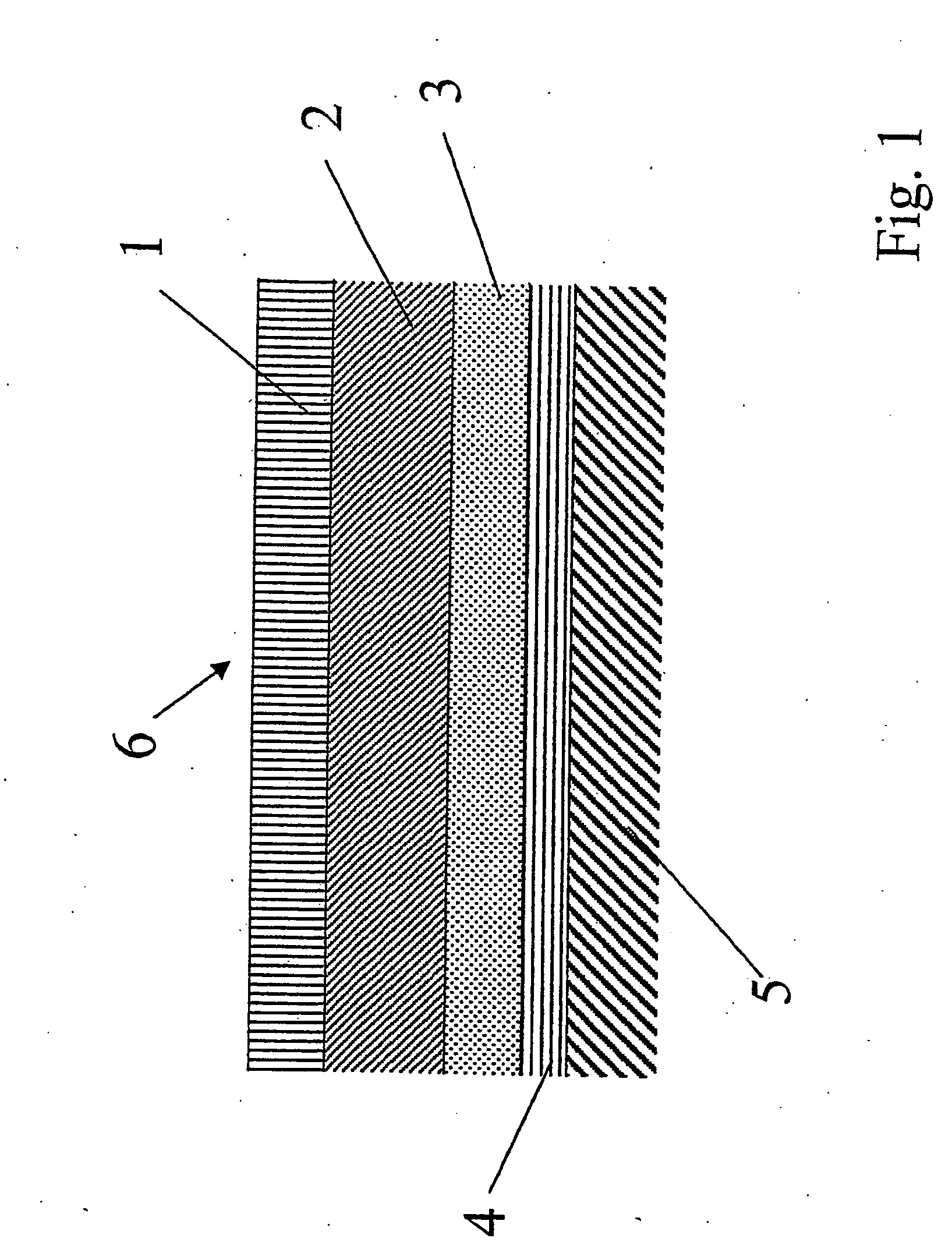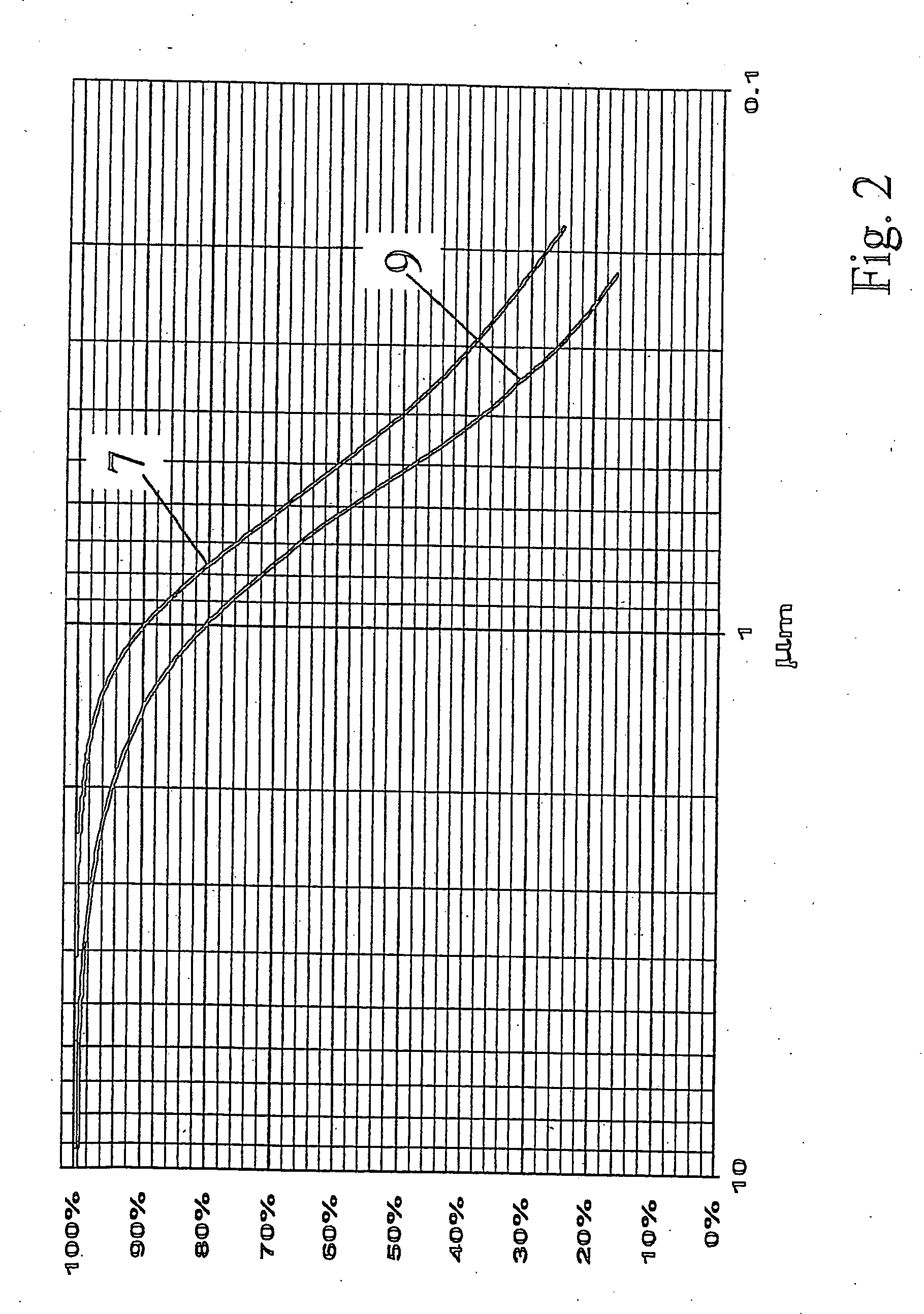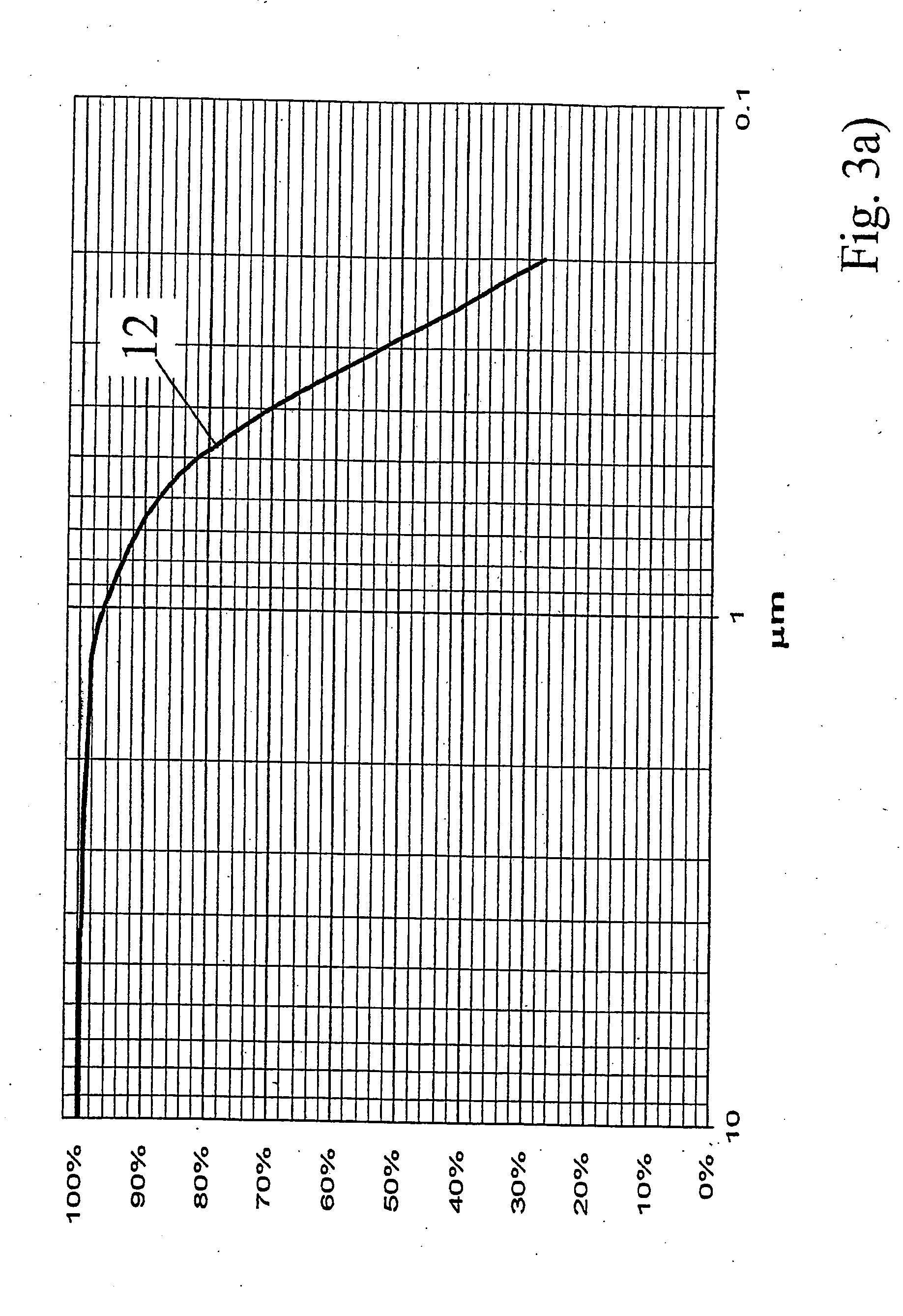Coated printing sheet and process for making same
a printing sheet and coating technology, applied in the field of printing sheets, can solve the problems of bulky paper, inherent conflict between the calendering necessary, uneven surface, etc., and achieve the effect of effective transport, high dispersibility, and effective adjustment of ink setting behaviour
- Summary
- Abstract
- Description
- Claims
- Application Information
AI Technical Summary
Benefits of technology
Problems solved by technology
Method used
Image
Examples
Embodiment Construction
[0044] Referring to the drawings, which are for the purpose of illustrating the present preferred embodiments of the invention and not for the purpose of limiting the same, FIG. 1 shows a cut through a paper representing a first example of a printing sheet according to the present invention. The printing sheet comprises a substrate 5, of which only the top part is displayed in FIG. 1. As a first layer on this substrate 5 there is a possibly pigmented sizing layer 4, then follows a third layer 3, a second layer 2 and a top layer 1. FIG. 1 only displays one of the lateral surfaces of the printing sheet, if the printing sheet is coated on both sides, which is usually the case, the structure displayed in FIG. 1 is also present on the bottom part of the printing sheet, the sequence of the layers being a mirror image of the sequence displayed in FIG. 1.
[0045] In the following, each of the layers as well as their components shall be described in more detail, the method for manufacturing t...
PUM
| Property | Measurement | Unit |
|---|---|---|
| pore widths | aaaaa | aaaaa |
| surface energy | aaaaa | aaaaa |
| surface roughness | aaaaa | aaaaa |
Abstract
Description
Claims
Application Information
 Login to View More
Login to View More - R&D
- Intellectual Property
- Life Sciences
- Materials
- Tech Scout
- Unparalleled Data Quality
- Higher Quality Content
- 60% Fewer Hallucinations
Browse by: Latest US Patents, China's latest patents, Technical Efficacy Thesaurus, Application Domain, Technology Topic, Popular Technical Reports.
© 2025 PatSnap. All rights reserved.Legal|Privacy policy|Modern Slavery Act Transparency Statement|Sitemap|About US| Contact US: help@patsnap.com



